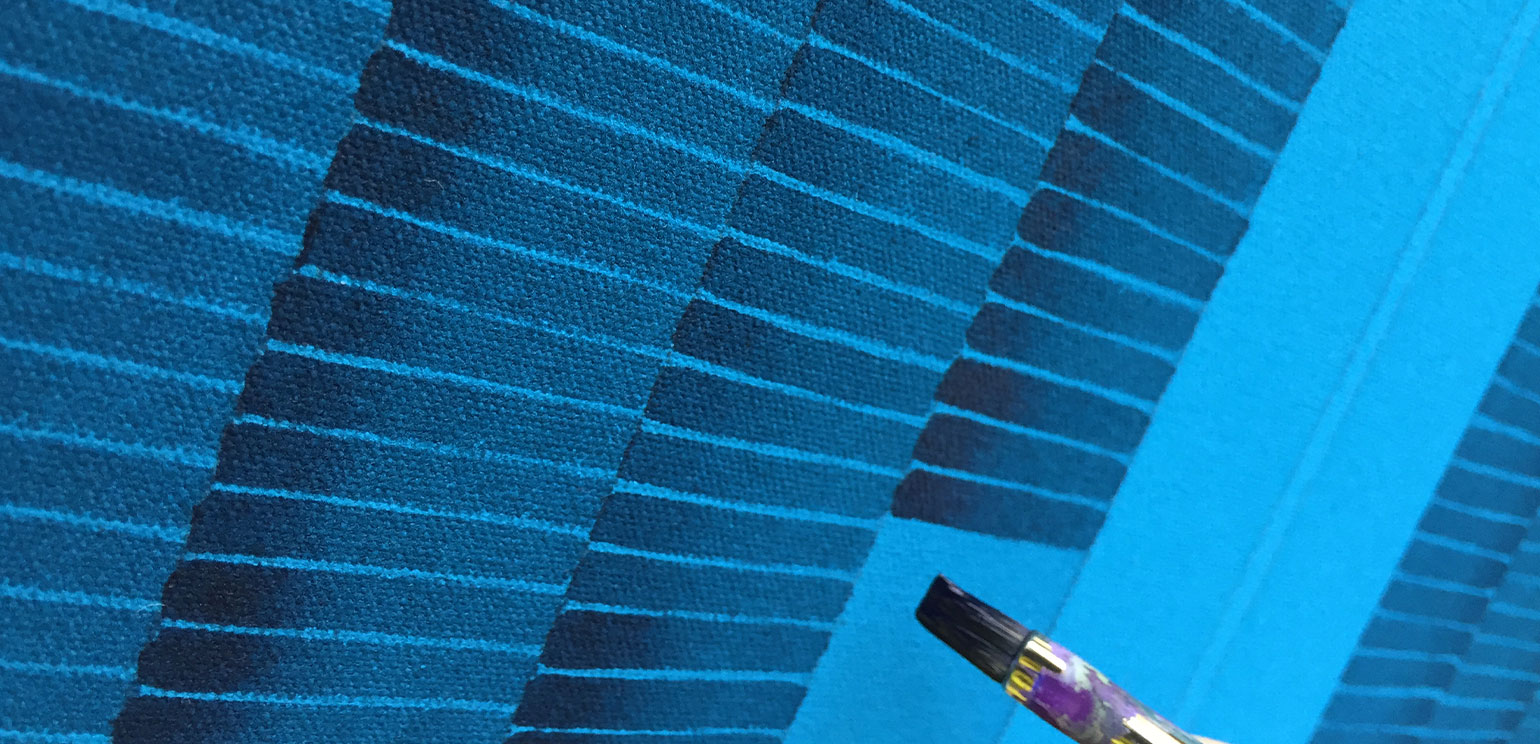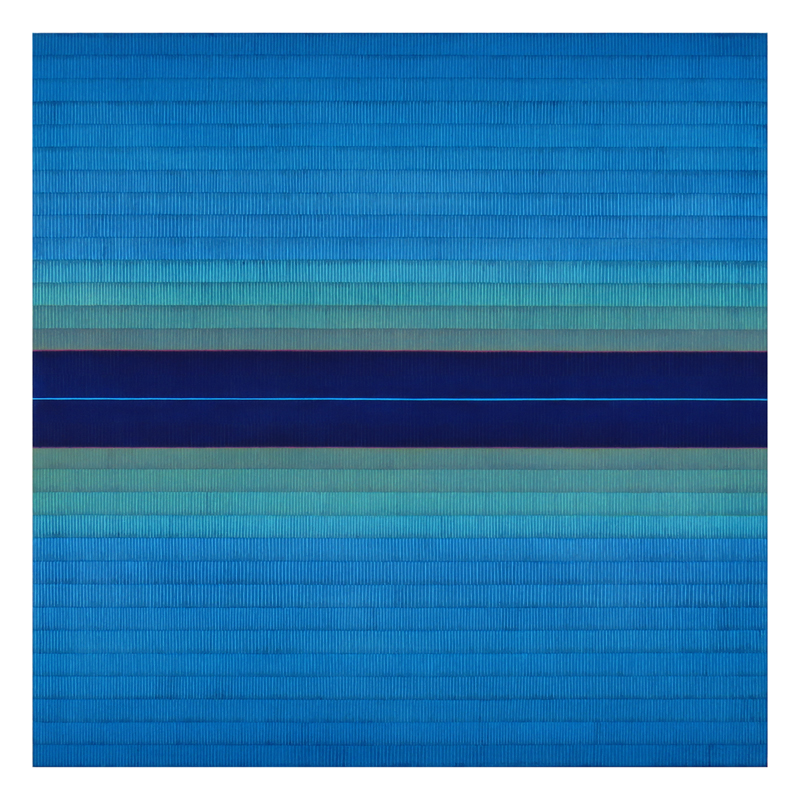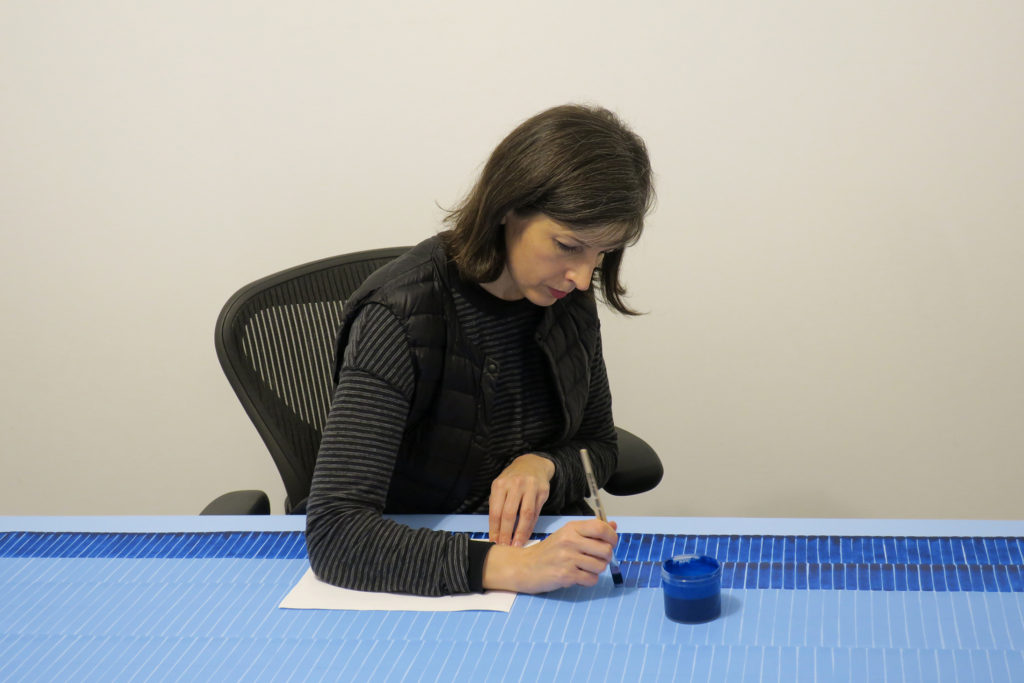
Slow Art Day
“I engage all my senses, dissolve into surrounding sounds, become immersed in the nature’s logic of being, and then, from memory, I recreate my experiences in drawings and paintings.”
– Anna Bogatin Ott
Ott’s art is inspired by nature and the patterns of microscopic particles in physics and microbiology. She uses new technology and traditional painting techniques. In her work, she explores universal values and truths through abstraction. Many artists interested in minimalism seek a mechanical coolness, but Ott’s uniform and repetitive marks seem organic. Her process of painting “is meditative in nature” and tied to Buddhist philosophy.

Close Looking
Anna Bogatin Ott’s process of art-making is meditative and focused as she carefully paints each line. Look closely at her painting. Let your gaze linger on details that interest you. How do Ott’s repetitive marks guide your gaze around the painting? Try reversing the path your eyes just traveled.
Look carefully and remember as many details as you can. Now, close your eyes and imagine the painting in black and white. Imagine it so far away it becomes a speck, then zoom in so close that it’s touching your nose.
Ott’s art is inspired by nature. Look closely at the colors in this painting. What parts of nature do her colors remind you of?

Slow Drawing
Ott uses a ruler to sketch horizontal guidelines on the canvas, then freehands each of her small vertical marks by hand with a brush and paint. She has said that with each mark she makes, she sends love and healing energy out into the world.
For this Ott-inspired slow-drawing exercise, you will need
- paper
- a ruler (or other straight edge)
- a drawing tool of your choice (pencil, pen, marker, crayon).
- Use the ruler or straight edge to draw a series of horizontal lines on the paper. Space the lines about an inch or two apart.
- Then use your drawing tool to begin making vertical marks on each line. You can vary the marks as you go or try to repeat the same form over and over.
- As you draw, try to slow down and stay in the present. Notice the sensations and experiences of the moment. Pay attention to all of your senses — sight, smell, touch, hearing and taste. Challenge yourself to draw past the point of when you think you should stop or start to get distracted. Some things you might try:
-
- Listen to the sound that your pen or pencil makes as it moves across the page.
- Notice the texture of the paper. Try varying the thickness of the lines by changing how hard you press down on the page.
- Feel the sensation of your fingers holding the pencil. Notice the weight of the drawing tool in your hand and how the surface of the paper feels.
- Bring your awareness to your breath. See if you can match the rhythm of your breathing to the rhythm of your mark-making.
- Notice the light and temperature in the room as you draw.
- Pay attention to the negative space between lines.
- Check in with your thoughts and feelings. Does this exercise bring any memories or emotions to the surface?